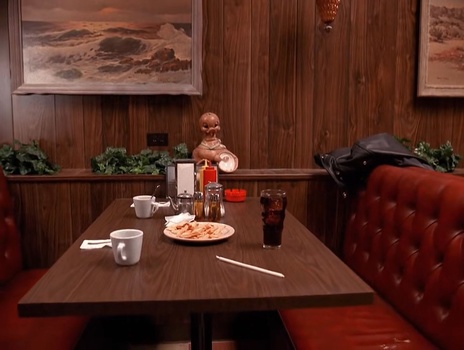Are you aware of Back to the Future Day? October 21, 2015: the day Marty McFly and Doc Brown came back to Hill Valley to try to correct Marty's timeline. Similarly, film and literature fans celebrate Judgement Day, or Bloomsday. The first being the day that Skynet became self-aware; the latter, the day Joyce's Bloom wandered Dublin. Well, this week is Twin Peaks week. It marks 30 years since Agent Dale Cooper drove into our lives. February 24 at 11:30 a.m., 1989 (ish).
Sometime in the early hours of February 28, Cooper made his first trip into the Black Lodge and we were given our first look at Lynch's Red Room. And then in the early hours of March 3, Cooper is shot and then visited by the Giant who finally manages to fill the empty spaces in the Great Northern Lodge.
For the record, I'm not going to speak specifically about Season 3. I'm still “getting over that.” But, I did think it was about time that we took a look at David Lynch's use of negative space here on Fstoppers.
The generally accepted language of cinema notes that negative space, the space around the subject(s), is designed to raise tension by implying that the space will eventually be filled. The longer the space is left empty, the more tension. There are exceptions to this rule, but, typically, the space is filled with impending doom or horror. Think open doorways about to be filled with Jason, Freddie, or Linda Blair. Maybe Glenn Close with a rabbit.
Lynch, who lives outside of the generally accepted approach to, well, everything, sees negative space as the unknown. To Lynch, this unknown is owned by the audience as much as it is owned by the filmmaker.
Lynch sometimes fills his spaces with the terrifying, sure. He's really good at it:

Sorry if this results in you not sleeping tonight.

He sometimes fills it with the wonderful:


More often than not though, he bucks tradition and he doesn't fill it at all. He leaves it empty and makes you think about it.
Having watched most of his films over and over (not “Dune” though, once was enough for “Dune”), more often than not, his negative space seems to be an experiment that he has little to no interest in seeing through. He seems to be intentionally thumbing his nose at the cinema language of negative spaces. Over and over, Lynch doesn't use negative space to ratchet-up terrifying tension. Just tension. And then he does so just long enough for you to forget about the tension and start to think about the space itself. He almost bores you into thinking. Following a long line of filmmakers like Eisenstein, Tarkovsky, and Kubrick, Lynch doesn't need to impress a feeling on you, he just wants to know that he's pushed you into thinking.
Unlike a lot of artists, Lynch isn't fixated on controlling how his work is received. He's happy to create it and put it out into the world. Happy for you to figure out what it means to you, not what you might think it means to him.
I guess we did get around to talking about Season 3 after all — wink wink.
Anyway, enough of the film criticism, let’s just look at some still from his “Twin Peaks” sets. I really do love his attention to detail. Take a moment to look at the captions and let me know what you think in the comments.
Check out the Twin Peaks Blog for a wider array of examples of Lynch's empty space.













I love Twin Peaks but Iwas devastated all those years ago with the ending of seaosn two when my hero, Agent Dale Cooper gets trapped in the black lodge possibly forever. What an ending. So I loved season three’s arrival and enjoyed every slow minute of it but couldn’t believe he’d end it like that after all those years and make me feel even worse. But what a visual master. Epsiode 8 is a masterpiece and possibly one of hte best hours of TV ever filmed.
Episode 8 certainly let everyone know that his intentions are to enjoy himself. I think he was saying, if you want to come for a ride with me, I'd be happy to have you, but if you don't, well, get out.
The scene with the Bill Evans music and all the colour blocking, with Dougie, that's my favourite.